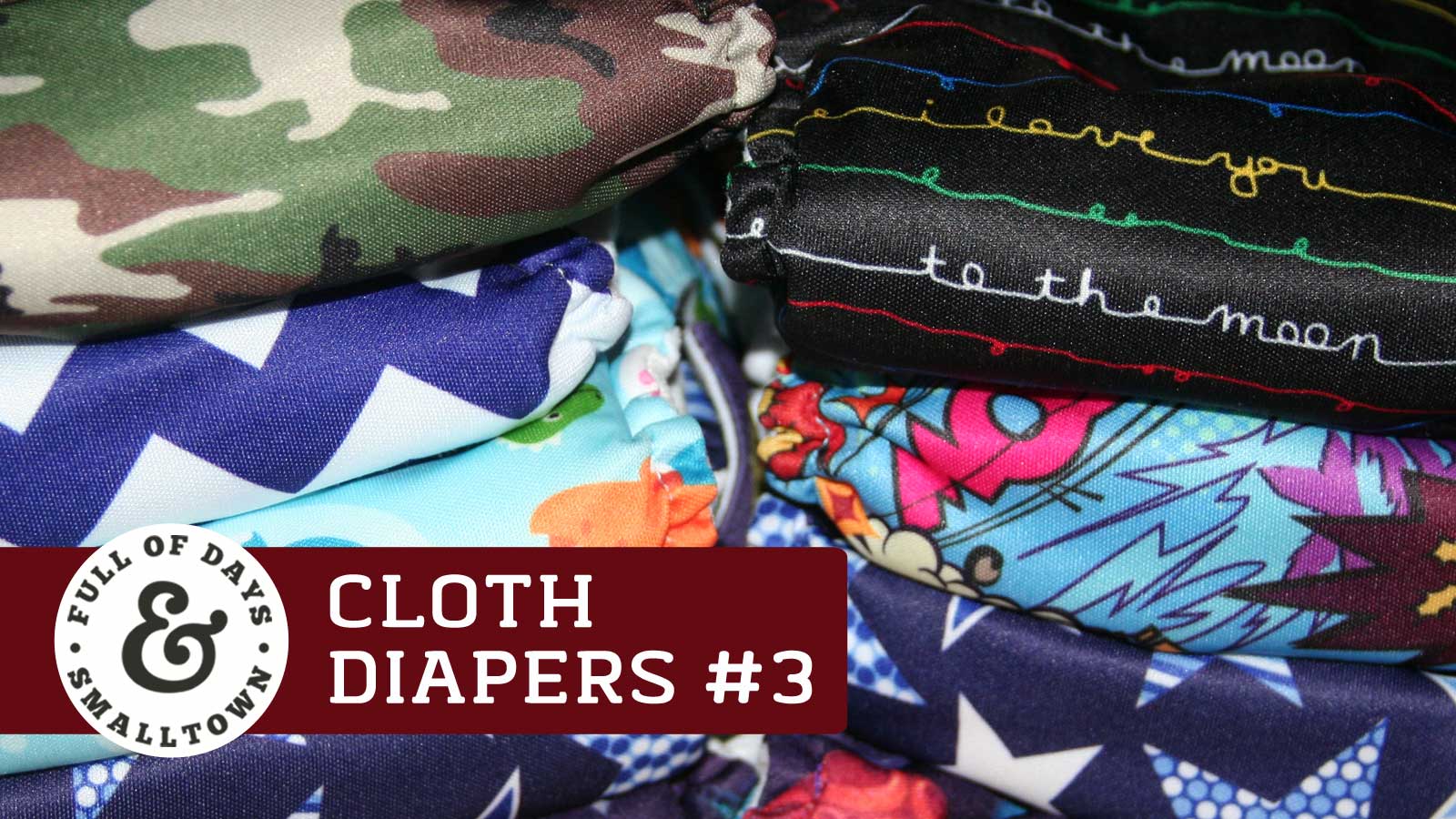
e talked about the whys of cloth diapering in Cloth Diapering Part 1 which included reasons such as chemical exposure, environmental burden, and financial comparisons. We then talked about the different types of cloth diapers and which might fit best with your lifestyle in Cloth Diapers Part 2. In our third installment, we’ll be discussing how to clean and care for cloth diapers, as well as some cloth diapering tools that will help make diapering your baby a breeze (or at the very least, not a burden).
Cloth Diapering Tools
The following is a list of tools and supplies we find extremely helpful for keeping up with cloth diapering. They’re by no means mandatory, but they certainly make the job much easier.
- OsoCozy Flushable Diaper Liners – disposable liners that help catch the “mess”, making cleanup MUCH easier. Although an extra cost, they’re only $0.08 each and worth every cent!
- Diaper Sprayer – Having a diaper sprayer was the one caveat I held to when it came to agreeing to cloth diapering. This sprayer attaches to the water line on your toilet and rests in a holder on the side of the tank. It’s easy to install (I did it myself, sans help from The Hubs), and has an “on/off lever” to keep those toddlers from soaking your bathroom floor…if you remember to turn it off, that is! Turn the lever on and spray the “mess” off the diaper and into the loo!
- Spray shield – Not necessary, but nice to use to surround the diaper when spraying off the “mess”, avoiding splatters and spray from getting onto the toilet seat or floor.
- Biokleen BacOut – The best discovery since using cloth diapers! This spray is made up of live microorganisms that essentially “eat” the odor causing bacteria remaining in your diapers after rinsing (and trust me, no matter how well you scrub, there will be bacteria remaining until wash day). This will keep your diapers from stinking up your bathroom before you get to washing them. It also works wonders on little kid or animal accidents on your carpet or rug. A must have in my opinion.
- Kanga Care Wet Bag – After rinsing (pre-washing) your diapers and spraying them with BacOut, keep your diapers in this bag until wash day. This keeps diapers from piling up in your bathtub, or some other bucket, which can be quite unappealing to company. This smaller wet bag is perfect for the diaper bag. Not quite as large, but perfect for holding two or three diapers on errand day (or daycare).
- Molly’s Suds Cloth Diaper Detergent – Although there are many brands of cloth diaper detergent (and we’ve tried many), this has worked the best. Not the most affordable, but how often is the cheapest option the one that works the best?
- Molly’s Suds Oxygen Whitener – Keeping diapers white and bright is important to me. I don’t like putting a dingy, stained, yet “clean” diaper onto my babies fresh bottom. Using this oxygen whitener (that’s also color safe) keeps our diapers clean and stain-free. (Alternatively, you can line-dry your diapers outside on a bright sunny day, the sun is a fantastic natural stain remover.)
- Wool Dryer Balls – Although I prefer to line-dry our diapers, when the weather isn’t cooperating I skip the dryer sheets and use these wool dryer balls. They help speed up the drying time and eliminate any static cling that might be present with microfiber liners. Plus they save a boatload of money over disposable dryer sheets!
As stated before, none of these items are mandatory for cloth diapering. But after two years, they’re the tools we wouldn’t be caught without.
Cloth Diaper Care – How to Wash Your Cloth Diapers
- When your new cloth diapers arrive, wash them once with your cloth diaper detergent, followed by three rinse cycles. This will help with absorbency and wash off any chemical residue that may be on your diapers from the manufacturers or packaging materials.
- Line dry or dry on low in the dryer with wool dryer balls (do not use dryer sheets as they can effect absorbency).
- Stuff, line and keep your cloth diapers handy. If they’re clean, folded and ready to go, you’re less likely to grab a disposable!
- When it’s time to change your baby, change as you would a regular disposable.
- As soon as possible, take your soiled diaper to the bathroom, dispose of the wipes, remove the liner and place in the sink, and spray off and flush the “mess”.
- With diaper and liner in the sink, using cold water, rinse and wring out diapers until the water runs clear. If the diaper cover or liner are soiled, I like to do a quick little scrub, rubbing the diaper on itself to remove as much as possible. Wring out as much water as possible, but don’t wring so hard you damage the waterproof backing of the diaper cover.
- Spray soiled surfaces of the diaper cover and both sides of the liner (insert) with BacOut.
- Place diaper in the wet bag until ready for wash.
- It’s highly recommended to wash every two to three days!
- On wash day, empty diapers and wet bag into washer. Place appropriate amount of detergent into basin with the diapers (not the detergent compartment). For Molly’s Suds, this is two scoops of cloth diaper detergent.
- Next place one scoop of Molly’s Oxygen Whitening cleaner into the basin with the diapers.
- Wash on the hottest setting for your machine. For mine this is “Whitest Whites”.
- Once diapers have gone through one full wash, I like to take a few diapers out and give them a “sniff check”. If they still smell a little stinky, I’ll wash them through a full cycle again on the hottest setting WITHOUT DETERGENT.
- If they don’t stink after the “sniff test”, I’ll run them through a rinse cycle 1-3 times to remove all excess detergent. Some people like to add vinegar during the final rinse cycle, but I haven’t found this necessary if I follow this routine.
- Transfer diapers to the dryer or hang them in the sun to dry.
- Have kids stuff, line and put the diapers away so they’re ready to go for their next use.
Do I Need to Strip My Diapers?
Is stripping your cloth diapers necessary? Maybe, but maybe not! This is where your water will really come into play. If you have hard water, or water that has a lot of minerals, you’re cloth diapers will not always be your friend. If you can install a water softener you’ll likely be a much happier camper, but if that’s not an option, my suggestion is to buy a pack of disposables, such as Seventh Generation, and use those as you strip your cloth diapers every 3-6 months.
In “Cloth Diapering Part 4” we will discuss proper method for stripping your cloth diapers. But do be advised that stripping your diapers is a very harsh process and should only be used as a last resort, not a regular method of cleaning.


